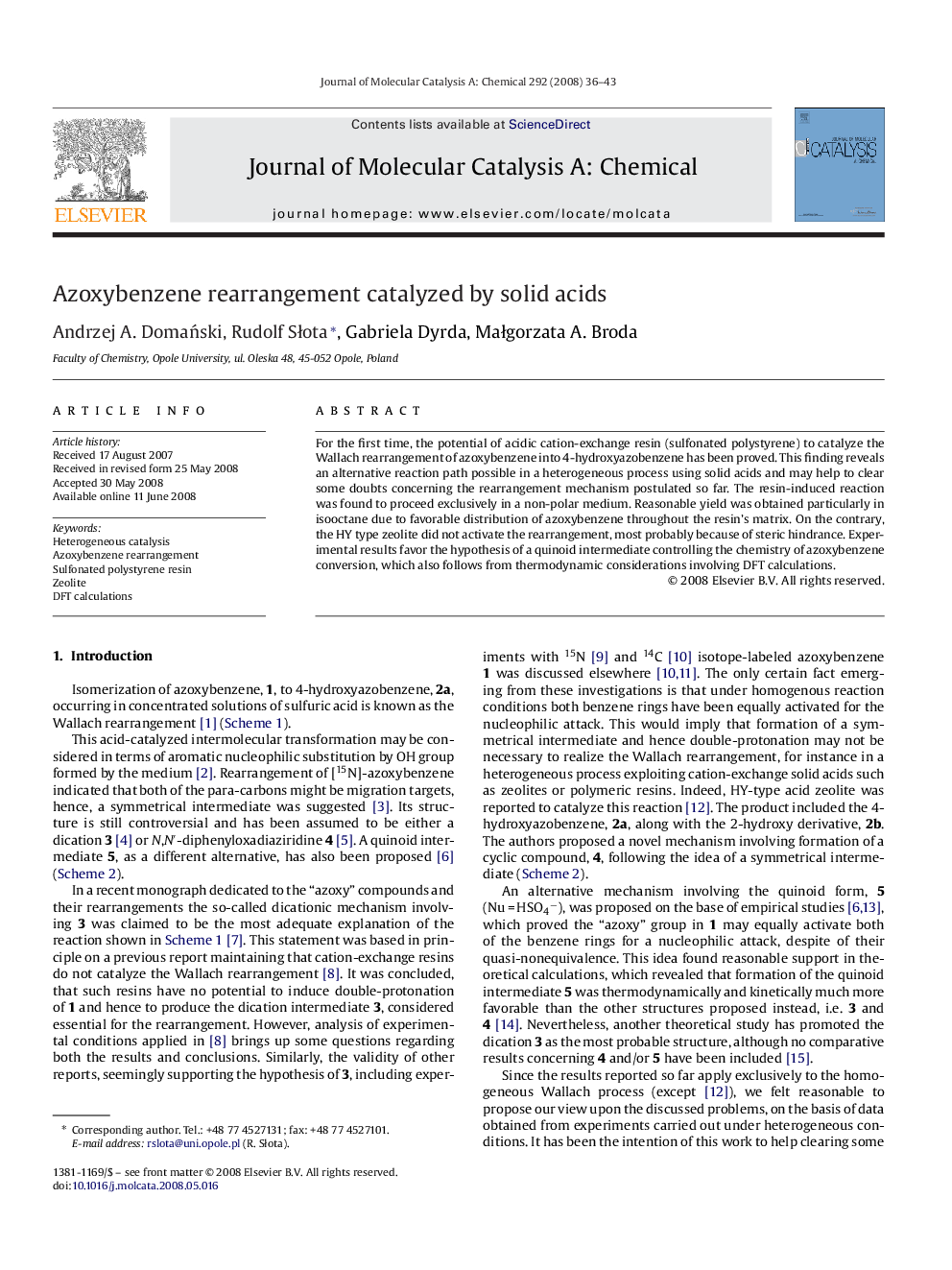| Article ID | Journal | Published Year | Pages | File Type |
|---|---|---|---|---|
| 67539 | Journal of Molecular Catalysis A: Chemical | 2008 | 8 Pages |
For the first time, the potential of acidic cation-exchange resin (sulfonated polystyrene) to catalyze the Wallach rearrangement of azoxybenzene into 4-hydroxyazobenzene has been proved. This finding reveals an alternative reaction path possible in a heterogeneous process using solid acids and may help to clear some doubts concerning the rearrangement mechanism postulated so far. The resin-induced reaction was found to proceed exclusively in a non-polar medium. Reasonable yield was obtained particularly in isooctane due to favorable distribution of azoxybenzene throughout the resin's matrix. On the contrary, the HY type zeolite did not activate the rearrangement, most probably because of steric hindrance. Experimental results favor the hypothesis of a quinoid intermediate controlling the chemistry of azoxybenzene conversion, which also follows from thermodynamic considerations involving DFT calculations.
Graphical abstractRearrangement of azoxybenzenes may be catalyzed by sulfonated polystyrene resins in non-polar solvents. The substrate conversion occurs within the bulk of the resin's matrix and the product depends on the azoxybenzene derivative used for the reaction. Crucial to this heterogeneous process is the formation of a quinoid intermediate resulting from interactions of azoxybenzene molecules with the sulfonic groups of the resin.Figure optionsDownload full-size imageDownload as PowerPoint slide
